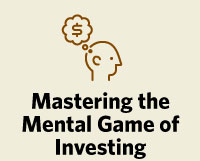Investment Discipline – How Much Should We Pay?
Our goal is to purchase durable, well-managed businesses when they are trading at a discount to our estimate of intrinsic value in order to establish a margin of safety, which can enhance prospective returns while reducing investment risk.
To determine how much we should pay for a business, our investment process considers four factors: Owner Earnings, Enterprise Value, Owner Earnings Yield, and Reinvestment Rates.
Owner Earnings
- Owner Earnings are the excess cash a business generates after reinvesting enough to maintain current capacity and competitive advantages but before investing for growth.
- To calculate Owner Earnings, we pore over income statements and make extensive adjustments.
- We pay close attention to extraordinary items, differences between maintenance capital spending and depreciation, the cost of stock options, and pension assumptions, among other items.
- We also consider where a business may be over-earning or under-earning versus its potential over full market cycles and try to normalize line items where appropriate.
Enterprise Value
- After determining Owner Earnings, we compare that figure to the price we would realistically have to pay to own the business, which we refer to as Enterprise Value.
- Enterprise Value takes into account equity, debt and off-balance-sheet liabilities as well as certain technical balance sheet adjustments and represents the price we would have to pay to purchase the entire business and own it free and clear.
Owner Earnings Yield
- By comparing Owner Earnings to enterprise value we can value a business on a multiple-of-earnings basis or, inversely, on an earnings-yield basis where we divide Owner Earnings by Enterprise Value and calculate the going-in yield – i.e., the initial return we would earn if we purchased that business in its entirety at today’s prices.
- The Owner Earnings Yield is a standardized method by which we may judge the attractiveness of a business relative not only to the prevailing risk-free rate (e.g., the interest rate on short-term U.S. Treasury bills) but also relative to the earnings yield offered by other potential investments in the market.
Reinvestment Rates
- Finally, we consider a range of growth rate assumptions that are partly based on organic growth and partly based on assumptions about future returns on capital.


